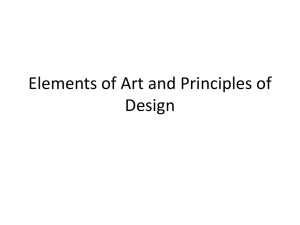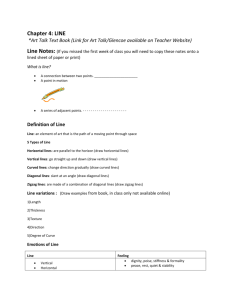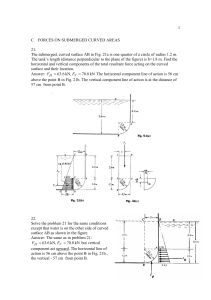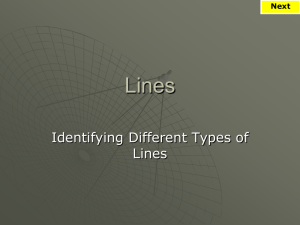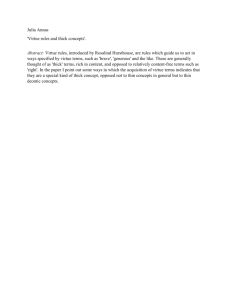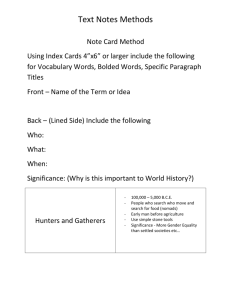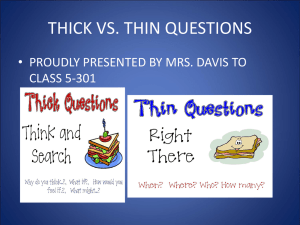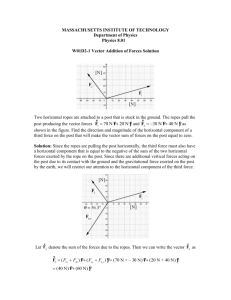Exploration #1 * The Line
advertisement
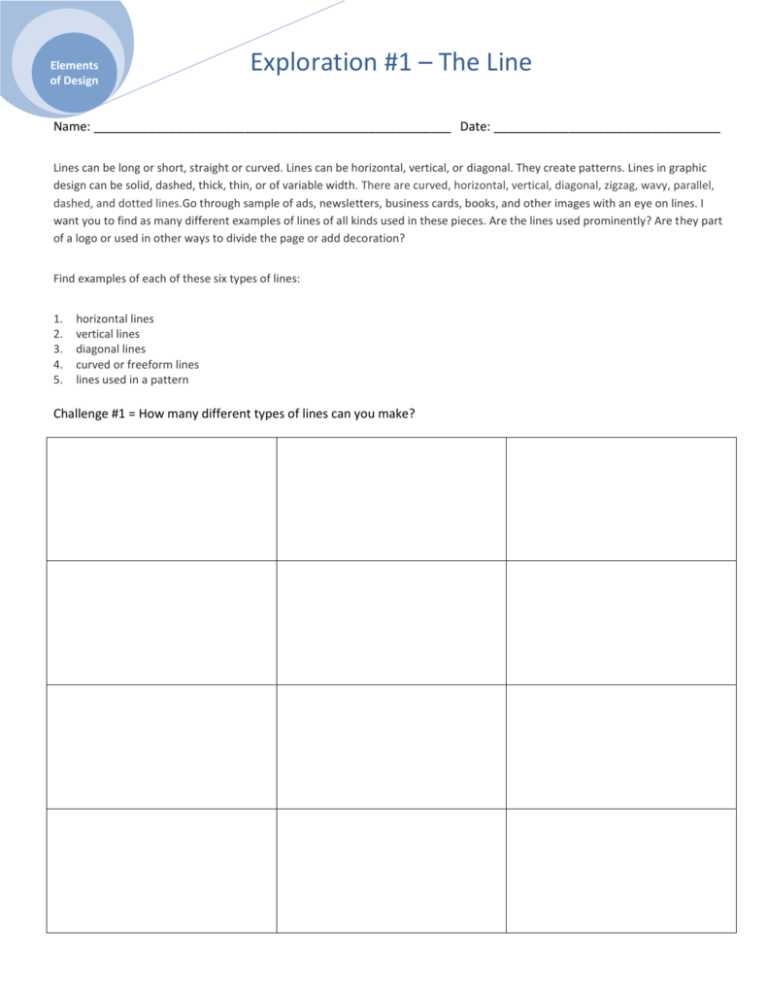
Elements of Design Exploration #1 – The Line Name: ____________________________________________________ Date: _________________________________ Lines can be long or short, straight or curved. Lines can be horizontal, vertical, or diagonal. They create patterns. Lines in graphic design can be solid, dashed, thick, thin, or of variable width. There are curved, horizontal, vertical, diagonal, zigzag, wavy, parallel, dashed, and dotted lines.Go through sample of ads, newsletters, business cards, books, and other images with an eye on lines. I want you to find as many different examples of lines of all kinds used in these pieces. Are the lines used prominently? Are they part of a logo or used in other ways to divide the page or add decoration? Find examples of each of these six types of lines: 1. 2. 3. 4. 5. horizontal lines vertical lines diagonal lines curved or freeform lines lines used in a pattern Challenge #1 = How many different types of lines can you make? Elements of Design Exploration #1 – The Line Name: ____________________________________________________ Date: _________________________________ Challenge #2 - Create a portrait of the person sitting next to you by drawing a continuous line. To do this, do NOT lift your pencil off the page once you begin drawing. Elements of Design Exploration #1 – The Line Name: _________________________________________ Date: ________________________________________ Challenge #3 – Create your own Line Drawing. You could do a simple turtle like the one shown here or any other appropriate shape that you prefer. The only rule is that your shape must be filled with various patterns and shapes. Elements of Design Exploration #1 – The Line Meaning and Mood Lines are great for creating mood and meaning. Beyond the foundational line types above, other line types and styles can be used to create meaning and mood. Because there truly are an endless number of line types and combinations within, we’ll just take a look at the few main types. Vertical lines simulate height and can create a mood of grandeur or spirituality. Vertical lines are more imposing and powerful. A great example of this is the vertical line usage in churches and cathedrals where ceilings are lifted on tall vertical pillars guiding the eyes upward. Horizontal lines generally create relaxation or a calming mood. They tend to be quiet and subtle whereas vertical lines are more imposing and powerful. In design horizontal lines are also known for their ability to organize content. Horizontal lines are often used to create balance and organization. The majority of curved lines create familiarity and comfort, they also suggest relaxation. Curved lines are very easy on the eyes and are interesting to follow. Curvy lines are associated with nature — they feel very organic. Diagonal lines are the greatest way to create movement and direction. Where horizontal lines suggest gravity and are stable, diagonal lines are more unstable. These lines don’t lay down or stand up in a restful position, they are in motion and you can actually create a sense of speed just by simply adjusting the pitch of the lines: the steeper, the faster. Thick lines are visually powerful on the canvas, they represent power and respect. The use of thick lines can build a feeling of power and boldness. However, the overuse of thick lines can be very overwhelming and way too demanding so you’ll need to be careful and balance them off with other visual elements or differing weights of line. Thin lines tend to feel fragile, but their subtle feeling makes them great for directing the eye without being annoying. They are also empathetic to the viewer and tend to create a feeling of comfort and tranquility. Combining thin and thick lines is a great way to create visual interest and hierarchy by balancing the visually demanding thick lines with the subtle, comforting thin lines. Elements of Design Exploration #1 – The Line Name: _________________________________________ Date: ________________________________________ Challenge #4 – Use the information about types of lines to analyze the ads. They will be shown on the SmartBoard.
